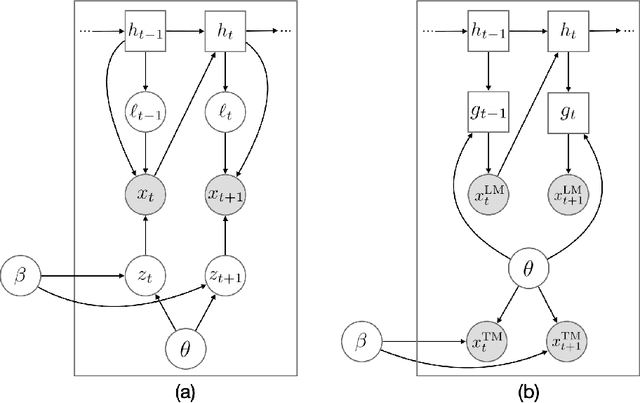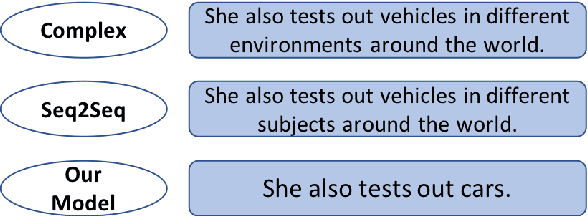Carolina Zheng
Enhancing Embedding Representation Stability in Recommendation Systems with Semantic ID
Apr 02, 2025Abstract:The exponential growth of online content has posed significant challenges to ID-based models in industrial recommendation systems, ranging from extremely high cardinality and dynamically growing ID space, to highly skewed engagement distributions, to prediction instability as a result of natural id life cycles (e.g, the birth of new IDs and retirement of old IDs). To address these issues, many systems rely on random hashing to handle the id space and control the corresponding model parameters (i.e embedding table). However, this approach introduces data pollution from multiple ids sharing the same embedding, leading to degraded model performance and embedding representation instability. This paper examines these challenges and introduces Semantic ID prefix ngram, a novel token parameterization technique that significantly improves the performance of the original Semantic ID. Semantic ID prefix ngram creates semantically meaningful collisions by hierarchically clustering items based on their content embeddings, as opposed to random assignments. Through extensive experimentation, we demonstrate that Semantic ID prefix ngram not only addresses embedding instability but also significantly improves tail id modeling, reduces overfitting, and mitigates representation shifts. We further highlight the advantages of Semantic ID prefix ngram in attention-based models that contextualize user histories, showing substantial performance improvements. We also report our experience of integrating Semantic ID into Meta production Ads Ranking system, leading to notable performance gains and enhanced prediction stability in live deployments.
Hypothesis Testing the Circuit Hypothesis in LLMs
Oct 16, 2024Abstract:Large language models (LLMs) demonstrate surprising capabilities, but we do not understand how they are implemented. One hypothesis suggests that these capabilities are primarily executed by small subnetworks within the LLM, known as circuits. But how can we evaluate this hypothesis? In this paper, we formalize a set of criteria that a circuit is hypothesized to meet and develop a suite of hypothesis tests to evaluate how well circuits satisfy them. The criteria focus on the extent to which the LLM's behavior is preserved, the degree of localization of this behavior, and whether the circuit is minimal. We apply these tests to six circuits described in the research literature. We find that synthetic circuits -- circuits that are hard-coded in the model -- align with the idealized properties. Circuits discovered in Transformer models satisfy the criteria to varying degrees. To facilitate future empirical studies of circuits, we created the \textit{circuitry} package, a wrapper around the \textit{TransformerLens} library, which abstracts away lower-level manipulations of hooks and activations. The software is available at \url{https://github.com/blei-lab/circuitry}.
Revisiting Topic-Guided Language Models
Dec 04, 2023



Abstract:A recent line of work in natural language processing has aimed to combine language models and topic models. These topic-guided language models augment neural language models with topic models, unsupervised learning methods that can discover document-level patterns of word use. This paper compares the effectiveness of these methods in a standardized setting. We study four topic-guided language models and two baselines, evaluating the held-out predictive performance of each model on four corpora. Surprisingly, we find that none of these methods outperform a standard LSTM language model baseline, and most fail to learn good topics. Further, we train a probe of the neural language model that shows that the baseline's hidden states already encode topic information. We make public all code used for this study.
An Invariant Learning Characterization of Controlled Text Generation
May 31, 2023Abstract:Controlled generation refers to the problem of creating text that contains stylistic or semantic attributes of interest. Many approaches reduce this problem to training a predictor of the desired attribute. For example, researchers hoping to deploy a large language model to produce non-toxic content may use a toxicity classifier to filter generated text. In practice, the generated text to classify, which is determined by user prompts, may come from a wide range of distributions. In this paper, we show that the performance of controlled generation may be poor if the distributions of text in response to user prompts differ from the distribution the predictor was trained on. To address this problem, we cast controlled generation under distribution shift as an invariant learning problem: the most effective predictor should be invariant across multiple text environments. We then discuss a natural solution that arises from this characterization and propose heuristics for selecting natural environments. We study this characterization and the proposed method empirically using both synthetic and real data. Experiments demonstrate both the challenge of distribution shift in controlled generation and the potential of invariance methods in this setting.
Complexity-Weighted Loss and Diverse Reranking for Sentence Simplification
Apr 04, 2019



Abstract:Sentence simplification is the task of rewriting texts so they are easier to understand. Recent research has applied sequence-to-sequence (Seq2Seq) models to this task, focusing largely on training-time improvements via reinforcement learning and memory augmentation. One of the main problems with applying generic Seq2Seq models for simplification is that these models tend to copy directly from the original sentence, resulting in outputs that are relatively long and complex. We aim to alleviate this issue through the use of two main techniques. First, we incorporate content word complexities, as predicted with a leveled word complexity model, into our loss function during training. Second, we generate a large set of diverse candidate simplifications at test time, and rerank these to promote fluency, adequacy, and simplicity. Here, we measure simplicity through a novel sentence complexity model. These extensions allow our models to perform competitively with state-of-the-art systems while generating simpler sentences. We report standard automatic and human evaluation metrics.
 Add to Chrome
Add to Chrome Add to Firefox
Add to Firefox Add to Edge
Add to Edge